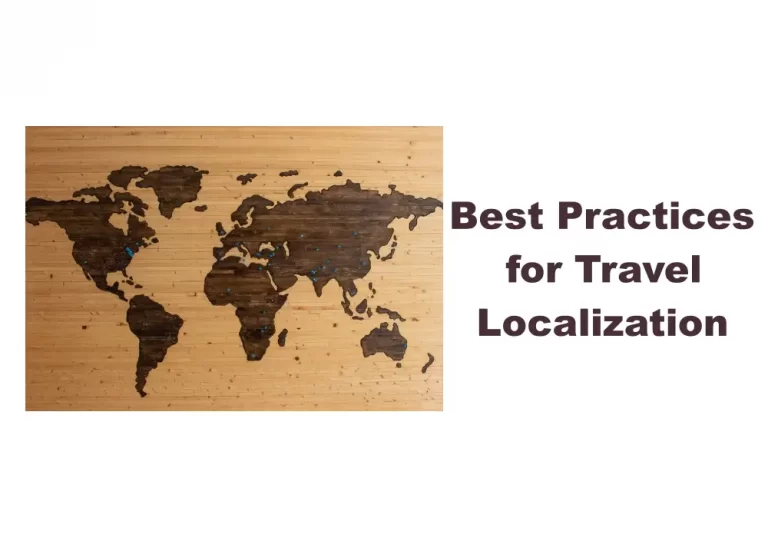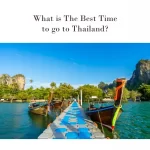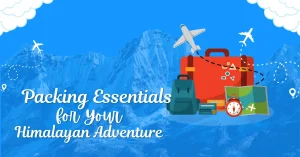When a tour business does not localize travel content then it will not be able to tap into the local market. This is because it is not culturally relevant and linguistically too, it is not reaching the local masses. Travel localization occurs when the travel service owner satisfies the following 9 best practices for travel localization to localize travel content For different languages
Best Practices for Travel Localization
- Travel content is translated into local languages
- Images are changed to suit the local culture
- Marketing messages are targeted according to the local scenario
But localization is not only about translating travel content into a local language. Travel localization is more than just that. It is a whole strategy that should be put into practice and involve steps like the following:
- Selecting keywords that are location-based
- Keywords should be chosen with traffic potential and search volumes
- Content should be culturally relevant and should include cultural references such as local dishes, local temples, rituals, etc.
- Content should also touch on the time zone
Travel services that need localization
When we speak of travel localization then we refer to particular services within the travel domain. These are various services that should implement location-based travel content.
- Hotels and resorts
- Hospitality
- Airlines
Which content requires localization
Localization is all about targeting different cultures and modifying the content to address that particular culture. Therefore the content that needs to be modified for localization must be in the:
- Landing pages
- Blogs
- Product descriptions
- Website content
- FAQ
- Chatbots
- Customer support
- Mobile apps
- Social Media
- SEO
9 Best practices for travel localization
There are broadly speaking 9 best practices for travel localization that you need to implement. These are strategies that ensure that the content that you deliver to the local audience is in sync with their culture and language.
1. Absolute clarity about the target market
You should understand your audience and their language before you start localizing content. Knowing the language is just a start, and it is also necessary to use it correctly. You should recruit the local population who is adept in using local phrases and greetings. They have the best knowledge of the trends currently running in their region. You should explore various channels to showcase your message and entice the local audience you intend to target.
2. Widely spoken languages
If you want your marketing content to be in the local languages you should know which is the most widely spoken language in the world. Here is an estimate:
- Mandarin Chinese – 1 billion
- Spanish – 400 million
- Hindi – 370 million
- English – 360 million
- Arabic – 250 million
- Portuguese – 213 million
- Bengali – 170 million
- Russian – 150 million
- Japanese – 130 million
- German – 120 million
3. Transcreation is the buzzword, not the translation
Translation is just translating one language into a different language. But transcreation goes further than just translation. It is something more profound and effective. Transcreation is when the text is translated without losing the real meaning of the text and what it implies. The forms of expression, the idioms, and the essence should remain intact when the text is translated and that is the true meaning of transcreation. Copywriters should bear this in mind when creating marketing copy.
4. An effective Translation Management System
You will need a very impactful Translation Management System to tackle the vital elements. These elements are essential for behind-the-scenes tasks and other functions. Briefly, they are as follows.
- Direct Website Translation: Here you can translate the text from the website directly.
- Translation Memory: You can keep a database of translated content.
- Collaboration functions: Teamwork, cooperation, collaboration, revision, feedback, and other such factors
5. Imagery
Images are crucial for capturing the essence of the website and the local culture. Poor images, blurred images, and inappropriate images spell disaster for the website. If your website is trying to promote tourism in a particular region or city, then it should have images that are relevant to that region. A strong understanding of the local culture will help you add the right image to your website.
6. Team
Forming a multilingual content is a very difficult task. That is why companies should take the help of other agencies from across the borders. International writing teams, and SEO experts, can be recruited to ensure that localization is done seamlessly across the entire website. Blogs, product descriptions, landing pages, social media campaigns, and copywriting must be done with adequate cross-border projects.
7. Marketing message
Understanding the language and the meaning of words is crucial in forming marketing content. Words used and their implied meanings are different for different countries. For example, the word ‘vacation’ is used in the US, but in Latin American countries, it is called ‘holiday’. You should make the use of right words and language when composing marketing copywriting materials. The cultural symbols can make your marketing message strike even more effectively.
8. Payments
When you are developing the website you should consider the local currency. You should also note down the units of measurement, weights, distances, clothing sizes, etc.
9. Date and Time
The style in which dates are written also varies from country to country. In the US the standard format for dates is “MM/DD/YYYY”. In the UK, it is “DD/MM/YYYY”.
Conclusion
So if you are still thinking about how to localize travel content For different languages, then the above 9 best practices for travel localization. You can make effective marketing campaigns and restructure the website content so that It makes an impactful message among the locals.







You must be logged in to post a comment.